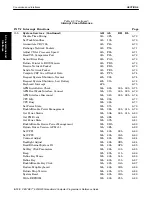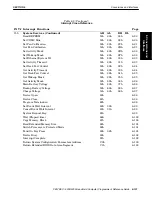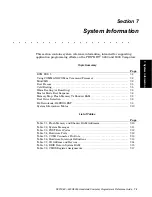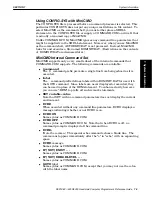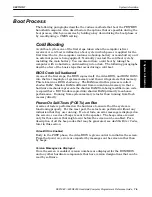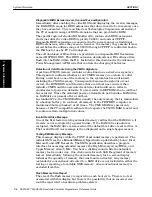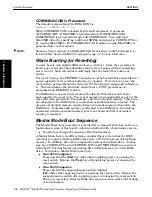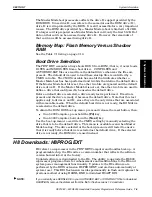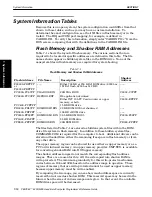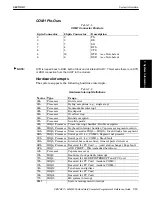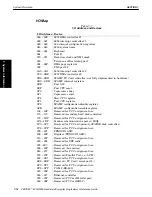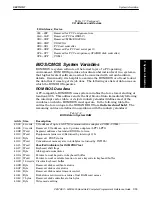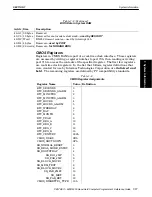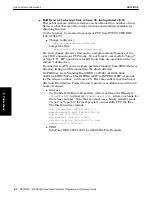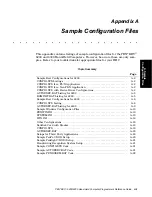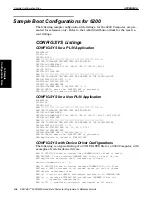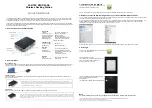
SECTION 7
System Information
7-10 PEN*KEY
R
6200/6300 Hand-Held Computer Programmer’s Reference Guide
System Information Tables
Because this is an open system, the system configuration could differ from that
shown in these tables; such as you may have a custom installation. To
determine the exact configuration, see the .INI files in flash memory or in the
toolkit. The IRQ and COM port mapping, for example, is defined in
CARDID.INI. To verify this information, simply enter CARDINFO /v" from the
DOS screen, comparing that with the definitions in the CARDID.INI file.
Flash Memory and Shadow RAM Addresses
Table 7Ć1 shows the layout of flash memory. The various sections that are
required to be located at specific addresses are defined in this table. The file
names shown appear as hidden system files in the ROM drive. None of the
nonsystem files in flash memory are required for system booting.
Table 7Ć1
Flash Memory and Shadow RAM Addresses
Flash Address
File Name
Description
Shadow
Address
F00000ćFBFFFF
or
F80000ćFBFFFF
ććć
Either 768 KB or 256 KB of ROM drive (6300 has
1 MB of flash, 6200 has 512 KB)
ććć
FC0000ćFC67FF VGABIOS.BIN
26K VGA BIOS
C0000ćC7FFF
FC6800ćFCC3FF H8PROG.EXT
H8 application download
ććć
Either INT 13h PC Card window or upper
memory, or both
C8000ćEFFFF
FCC400ćFCFFFF
15 KB ROM drive
FD0000ćFD57FF ROMDOSHI.BIN 22 KB ROM DOS not shadowed
ććć
FD5800ćFEFFFF ććć
106 KB of ROM drive
ććć
FF0000ćFF99FF
ROMDOSLO.BIN 38.5 KB ROM DOS 5
F0000ćF99FF
FF9A00ćFFAFFF ććć
5.5 KB ROM drive
ććć
FFB000ćFFFFFF ROMBIOS.BIN
20K ROM BIOS
FB000ćFFFFF
The files listed in Table 7Ć1 are stored as hidden system files within the ROM
drive file system in flash memory. In addition to these hidden system files,
COMMAND.COM is required for the computer to boot. Additional drivers can be
stored and loaded from either the remaining free space in flash memory or from
any other drive.
The upper memory region can be shared for use either as upper memory or as a
PC Card windowed memory. An upper memory provider, UMP.SYS, is available
for converting shadow RAM into DOS upper memory.
The shadow address ranges do not match the corresponding flash address
ranges. There is a reason for this: All the code copied into shadow RAM is
writeĆprotected. The minimum granularity for this writeĆprotect mechanism
varies between 16k and 32K, based on the address range in question. Those
regions of memory that are writeĆprotected cannot be used as upper memory,
because upper memory must be writeĆenabled.
By comparing the two maps, you can see how much address space is currently
reserved but not used as shadow ROM. This reserved space may be used in the
future when the sizes of various components grow. In that event, the available
ROM drive space will be decreased.
7. System Information

